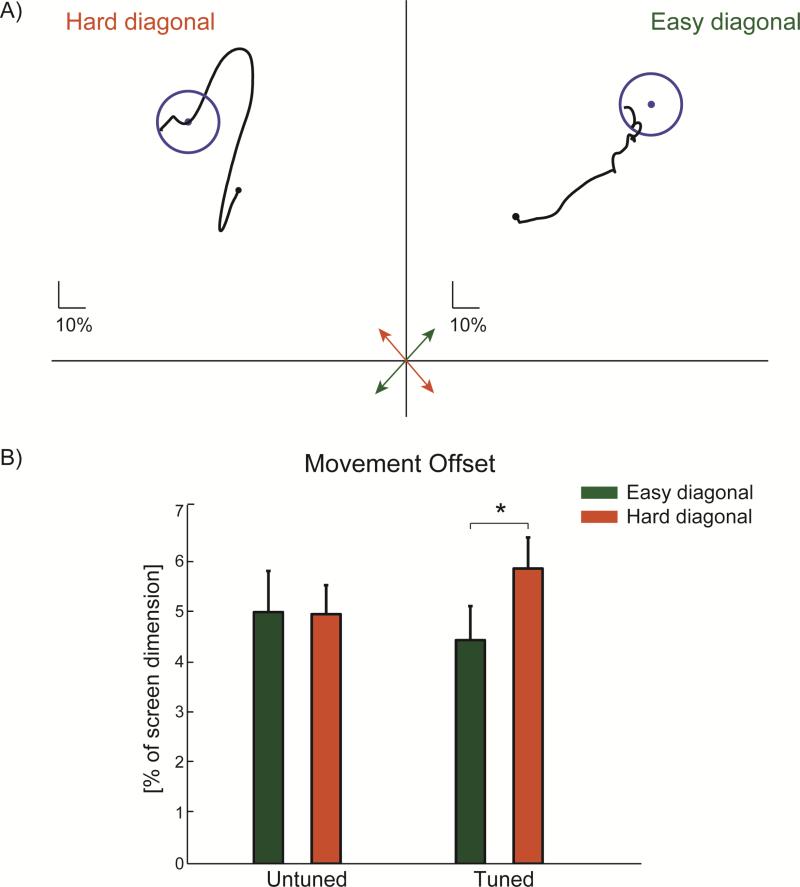Figure 7.
(A) Example cursor trajectories when the monkey used directionally tuned units to acquire targets appearing in the “easy” and “hard” diagonals during the dual control task (see Figure 6C). When targets appear along the easy diagonal (green arrow), the monkey moved the cursor in relatively straight paths towards the target (Movement offset = 4 % of screen dimension in this example). However, when targets appear along the hard diagonal (red arrow), the monkey combined movements largely along the easy diagonal to indirectly approach the target which resulted in a larger movement offset (6.5 %). (B) Movement offset during cursor control for all units tested in the dual control task. Untuned units control the cursor with equal movement offset when targets appear in either diagonal. Directionally tuned units control the cursor more directly toward targets in the easy diagonal compared to the hard diagonal (p = 0.03). Values in (B) are mean + SEM.

